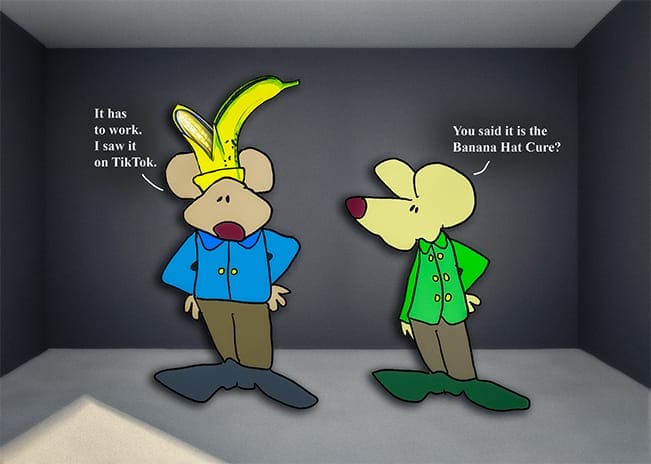I recently read an article which reported a bit of disturbing news, if you ask me.
A Pew survey released yesterday found that 14% of U.S. adults regularly get their news from TikTok, quadruple the share from just three years ago.
But wait.
There’s more:
Nearly a third (32%) of Americans ages 18–29 regularly get news from TikTok.
And 43% of TikTok users overall say they get news on the platform, up from 33% last year.
Now. I’m not a regular user of TikTok.
In fact, it seems a little off the rails to me, the few times I’ve been there.
But I can guarantee this.
There is not a Walter Cronkite, or Dan Rather, or Walter Winchell sitting at some TikTok desk, typing out the news.
On TikTok, people are more interested in celebrities, influencers, and social media personalities delivering the news, as opposed to journalists. People using this platform love to see the “drama, drama, drama” of it all, if you ask me.
But here’s the thing most people never consider. According to a NewsGuard investigation, almost 30% of videos on TikTok covering pressing world news topics contained misinformation. These topics ranged from COVID vaccines and gun violence to the Russia-Ukraine war and U.S. elections. Anything, really.
I think back to the first days of the internet and the photo of the shark jumping out of the water at the helicopter. Everyone was floored by the magnitude of what they had just seen on the internet. “Amazing,” they said. “Remarkable.”
But I knew Photoshop. And I knew it was completely mocked up. This is still going on some 30 years later. Now, Photoshop, AI-powered deepfakes, and very convincing figureheads can all contribute to the spread of misinformation on short-form video platforms.
It can be very difficult and time-consuming to fact-check and reverse image search every photo and video you see on TikTok to ensure the information is accurate. So people swallow it whole. Gulp.
Then there is the entire “rage against the machine” aspect of reporting on TikTok. Sometimes, people online engage in “rage farming” or “rage-baiting.” This occurs when a creator intentionally posts content that will upset or annoy their viewers.
They do this for popularity ratings. You see, “rage-baiting” follows the saying that “all publicity is good publicity.” Even if someone’s content upsets people, it gets people talking and brings that creator views and money.
I’m sorry to say it, but a lot of people are getting misinformed because they are lazy and/or they enjoy the “theatrics” of hyped news.
It is a dangerous practice.
We should always seek the truth and check our sources.
When it comes to news these days, we should know where it is coming from. And not trust some snot-nosed kid on TikTok with a smartphone in his hand typing away whatever he pleases.
“”””””””
“The greatest trick the Devil ever pulled was convincing the world he didn’t exist.”
— Charles Baudelaire
“”””””””
“The trust of the innocent is the liar’s most useful tool.”
— Stephen King
“”””””””
“Deceivers are the most dangerous members of society.”
— Pierre Charron
“”””””””
Ticky Tocky. And down we go.
